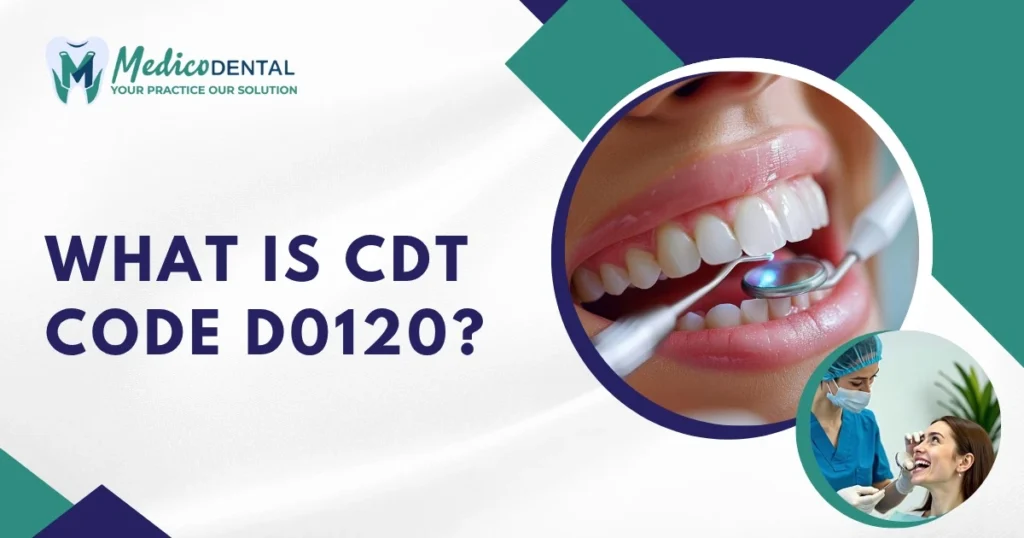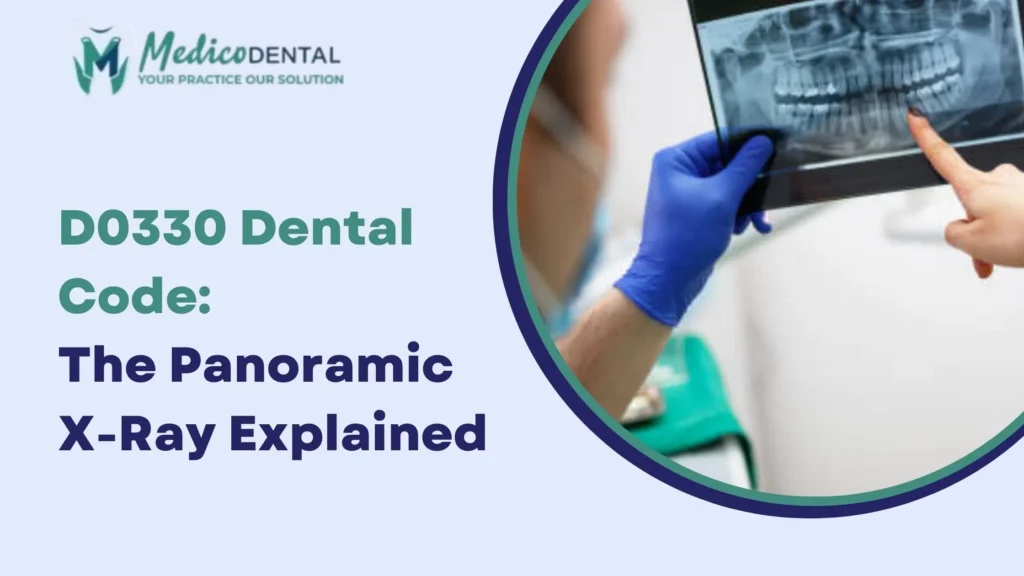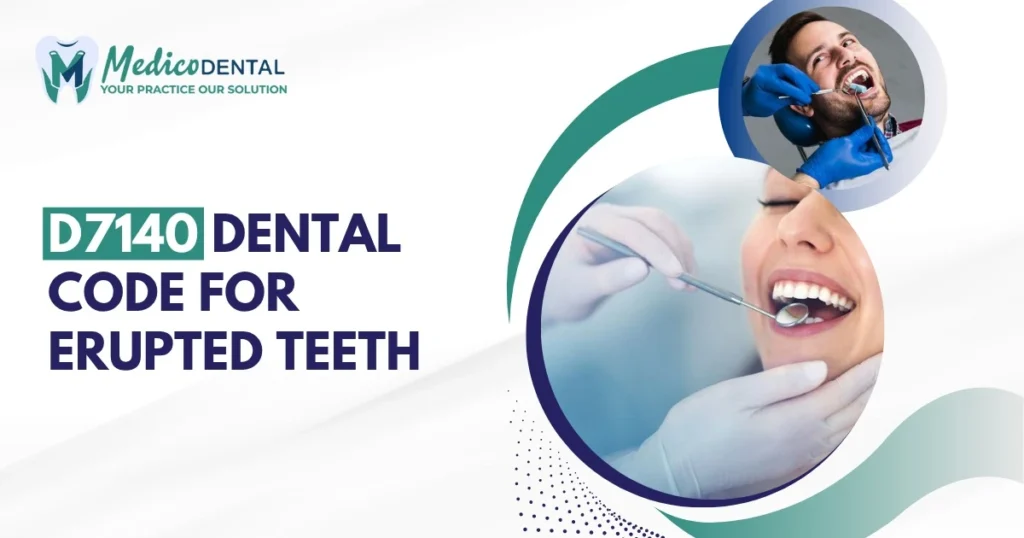CDT Code D0120 refers to the Periodic Oral Evaluation for established patients a routine check up conducted by a dentist to monitor ongoing oral health. This evaluation is not just a quick visual inspection; it’s a professional assessment of the mouth, teeth, gums, and surrounding tissues.
For returning patients, D0120 helps track changes since the last visit, ensuring early detection of potential issues like decay, gum disease, or oral cancer. It’s a preventive measure designed to maintain long term oral wellness rather than reactive treatment.
Purpose of the Procedure
The main goal behind performing a D0120 evaluation is to promote preventive care and reduce the risk of advanced dental problems. Regular evaluations allow dentists to detect subtle changes that might otherwise go unnoticed.
During the appointment, the dentist ensures that all previous treatments are functioning properly and that no new complications have developed. This type of proactive care saves patients from discomfort and expensive procedures later on.
When Is D0120 Used?
D0120 is used only for established patients meaning individuals who have already been treated by the same dental provider. It’s commonly scheduled once or twice a year to maintain consistent monitoring of oral health.
This code is not meant for new patients (who would be billed under D0150) or problem focused visits (D0140). Instead, it’s part of a patient’s long term care plan to ensure overall oral stability and preventive maintenance.
Key Components of a Periodic Oral Evaluation
Review of Medical and Dental History
Each periodic evaluation begins with a review of the patient’s updated medical and dental history. Dentists need to know if there have been changes in medications, health conditions, or previous dental treatments. This step ensures that upcoming care is safe and personalized.
For example, patients taking blood thinners or those with diabetes may require specific treatment adjustments or preventive measures.
Oral Cancer Screening
An essential part of D0120 is a quick but thorough oral cancer screening. The dentist examines the lips, cheeks, tongue, gums, and throat for any unusual lesions, lumps, or color changes. Early detection of oral cancer can make a significant difference in treatment success, and this screening helps identify warning signs before symptoms appear.
Periodontal Examination
The periodontal (gum) evaluation focuses on checking for inflammation, bleeding, or bone loss all of which can indicate gum disease. Dentists use tools to measure pocket depth and assess the overall health of the supporting structures around each tooth.
If signs of gum disease are detected, additional diagnostic codes or treatments (such as scaling and root planing) may follow.
Dental Caries and Restorations Assessment
Next, the dentist checks for cavities, cracks, or damage in existing restorations such as fillings, crowns, and bridges. Even well done restorations can wear down over time or develop minor fractures. Detecting these early ensures the patient avoids larger issues like infection or tooth loss.
Documentation and Record Updates
Finally, all findings both normal and abnormal are recorded in the patient’s dental chart. This includes notes on gum health, x ray findings, restorations, and any new observations.
Accurate documentation helps maintain continuity of care, supports treatment planning, and ensures proper claim submission for dental insurance reimbursement.
Frequency Guidelines for D0120 Examinations
Recommended Intervals (Every 6–12 Months)
Most dental professionals recommend that established patients schedule a D0120 evaluation every six months. However, this frequency may vary depending on the patient’s oral hygiene habits, dental history, and overall health condition.
Regular visits help prevent the progression of small dental issues into more serious conditions and promote lifelong oral health.
Factors Influencing Examination Frequency
Several factors determine how often a patient should have a periodic evaluation:
- Oral hygiene habits: Patients with excellent oral care may need only annual exams, while others may benefit from semiannual visits.
- Existing dental conditions: Those with previous gum disease, multiple restorations, or ongoing treatments should visit more often.
- Medical health: Conditions like diabetes, pregnancy, or medications that cause dry mouth increase the risk of oral problems and may require closer monitoring.
Each patient’s recall schedule is tailored based on their unique risk level and dental history.
Pediatric vs. Adult Evaluation Schedules
For children, D0120 evaluations are crucial in monitoring tooth development, alignment, and cavity prevention. Since children’s oral structures change rapidly, dentists often recommend exams every six months.
Adults, on the other hand, may maintain a yearly schedule if they have stable oral health. Older adults or those with restorative or periodontal needs may benefit from more frequent evaluations.
D0120 and Dental Insurance Coverage
Typical Coverage Policies
Most dental insurance plans include D0120 as part of preventive care benefits, meaning it’s either fully covered or subject to a small copay. Insurance providers recognize that regular evaluations help reduce long term treatment costs by identifying issues early.
Patients can usually expect coverage for one or two D0120 exams per year, depending on their plan.
Common Limitations and Waiting Periods
Despite being a preventive service, certain insurance plans have limitations. For instance:
- Some policies restrict coverage to one D0120 every six months.
- There may be waiting periods for new members before preventive benefits activate.
- Coverage can vary if the evaluation coincides with other services, such as cleanings or x rays.
Understanding these limitations helps patients and dental offices avoid unexpected out of pocket expenses.
Tips for Verifying Patient Eligibility
Before performing a D0120 evaluation, dental offices should always verify the patient’s coverage:
- Check insurance portals for frequency limits and coverage details.
- Confirm patient status (established vs. new) to ensure proper coding.
- Document verification notes to prevent claim denials or delays.
Being proactive with verification not only prevents billing issues but also builds patient trust by providing accurate cost information upfront.
D0120 vs. Other Evaluation Codes
D0150 Comprehensive Oral Evaluation (New Patient)
The D0150 code is used for patients visiting a dental practice for the first time or those who haven’t been seen in over three years. It’s a detailed, full mouth evaluation that includes a thorough assessment of the teeth, gums, soft tissues, bite alignment, and jaw function.
Unlike D0120, which focuses on maintenance, D0150 is designed to establish a baseline for future care. Dentists use this exam to understand the patient’s complete oral condition before developing a treatment plan.
D0140 Limited or Problem Focused Evaluation
The D0140 code applies when a patient visits for a specific issue, such as tooth pain, swelling, or a broken filling. This evaluation targets one problem area rather than the entire mouth.
For example, if a patient comes in with a chipped tooth or abscess, the dentist performs a focused exam and bills under D0140. It’s typically used for emergency or urgent visits rather than routine check ups.
D0180 Comprehensive Periodontal Evaluation
The D0180 code is intended for patients who show signs of periodontal disease or have a history of gum treatment. It involves detailed probing of gum pockets, assessment of bone loss, and evaluation of periodontal health.
This exam goes beyond the basic gum check included in D0120. Dentists use D0180 when they need an in depth understanding of the patient’s periodontal condition to plan appropriate treatment or maintenance therapy.
When to Use Each Code Correctly
Choosing the correct code is crucial for both compliance and reimbursement:
- D0150 → For new or long absent patients needing a full assessment.
- D0120 → For established patients during routine check ups.
- D0140 → For emergency or single issue visits.
- D0180 → For patients requiring detailed periodontal evaluation.
Accurate coding ensures that documentation matches the procedure performed and that claims are processed without delays or denials.
Clinical and Billing Considerations
Documentation Requirements for Proper Coding
Detailed documentation supports accurate billing and protects dental providers from claim rejections. For D0120, the chart should clearly include:
- Review of medical and dental history.
- Findings from oral cancer screening and periodontal evaluation.
- Assessment of restorations and new conditions detected.
- Any recommended follow up or diagnostic tests.
Each note should reflect what was done during the appointment helping justify the use of D0120 when insurance companies review the claim.
Common Billing Errors and How to Avoid Them
Many claim denials occur due to improper code selection or incomplete documentation. Here are common mistakes:
- Using D0120 for new patients instead of D0150.
- Failing to record supporting exam details.
- Submitting the procedure more frequently than allowed by insurance.
To avoid these issues, dental offices should maintain updated fee schedules, verify coverage limits, and use electronic health records that automatically prompt correct code use based on visit type.
Coordination with Diagnostic and Treatment Codes
D0120 is often billed alongside other preventive or diagnostic procedures, such as dental cleanings (D1110) or x rays (D0274). When doing so, ensure that each code accurately reflects the service provided.
Proper coordination between evaluation, diagnostic, and treatment codes ensures complete documentation, accurate billing, and compliance with payer guidelines.
Best Practices for Dentists and Hygienists
Accurate Charting and Coding for D0120
To maintain consistency, every D0120 visit should include standardized charting that covers history, visual inspection, and screening notes. Using structured templates or digital forms helps ensure nothing is missed.
Accurate charting not only supports billing but also provides a reliable record for future care and legal protection.
Enhancing Patient Communication and Recall Systems
Educating patients about the importance of periodic evaluations increases appointment adherence and improves oral outcomes. Implementing a recall system through phone reminders, texts, or emails helps patients stay on schedule.
When patients understand that regular exams prevent costly issues, they’re more likely to return consistently.
Maintaining Compliance with Insurance Payers
Insurance companies often audit claims to verify that billed procedures match the documented services. Staying compliant means following payer frequency limits, using correct CDT codes, and keeping thorough documentation.
Regular staff training and internal audits can help the dental team remain up to date with coding rules and minimize risks of denied claims.
Summary
Why Accurate Use of D0120 Matters
Correctly applying CDT Code D0120 ensures that patients receive consistent preventive care and that dental practices are fairly reimbursed for their services. It also helps build a reliable record of oral health progress a critical component of quality care.
Ensuring Proper Reimbursement and Patient Care
When the right code is used with complete documentation, both the patient and the practice benefit. Claims are processed efficiently, preventive services are prioritized, and patients enjoy early detection of oral health issues.
Ultimately, the D0120 evaluation reinforces the foundation of preventive dentistry protecting smiles, saving money, and promoting long term oral wellness.
FAQs
What does CDT Code D0120 mean?
Ans. CDT Code D0120 represents a Periodic Oral Evaluation for patients who already have an established relationship with their dentist. It’s a regular dental check up that allows the dentist to monitor your oral health, update your records, and detect any new dental issues early.
Who is considered an “established patient”?
Ans. An established patient is someone who has previously received care from the same dentist or dental office. If you’ve had a cleaning, filling, or exam from that provider before, you’re considered established and your check up will be billed under D0120 instead of a new patient code like D0150.
How often should I have a D0120 evaluation?
Ans. Most patients are advised to have a periodic oral evaluation every 6 to 12 months. However, the exact frequency depends on your oral health, hygiene habits, and risk factors. For example, patients with gum disease or chronic conditions like diabetes may need more frequent check ups.
What happens during a D0120 appointment?
Ans. A D0120 visit usually includes:
- Reviewing your medical and dental history.
- Checking for signs of oral cancer.
- Examining gums for inflammation or bone loss.
- Identifying cavities or issues with fillings and crowns.
- Updating your dental chart and treatment records.
It’s a comprehensive check to ensure your mouth stays healthy and problem free.
Is the D0120 exam covered by dental insurance?
Ans. Yes, most dental insurance plans cover D0120 as part of their preventive care benefits. Many plans allow one or two covered exams each year. However, it’s always best to confirm with your insurance provider to understand frequency limits and any waiting periods.



